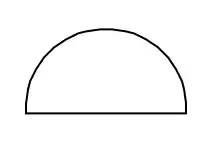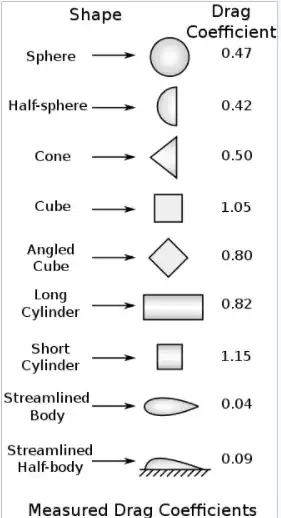I understand the reason airfoils are cambered on the top: to create lift. But one would assume this would result in aircraft wings having a semicircle-shaped design. Why is the cross-section of an airfoil instead more reminiscent of a teardrop on its side and cut horizontally? Why is the front thicker than the back?
Asked
Active
Viewed 3,715 times
1 Answers
34
The airfoil shape is optimized for two features
- a maximal lift coefficient $c_L$, to get a big lift force
- a minimal drag coefficient $c_D$, to get a small drag force
Maximizing the lift coefficient $c_L$ alone would, as you said,
demand for a semi-circle-like shape, like this:

Minimizing the drag coefficient $c_D$ alone would demand for a tear-drop-like shape (with a round front end and a thin back end. See the streamlined body in the image below.

(image from Wikipedia - Drag coefficient)
Putting these two requirements together you arrive
at the typical airfoil shape which is kind of a compromise between
the semi-circle and the tear-drop shapes from above.

(image from Wikipedia - Airfoil)
Thomas Fritsch
- 42,352